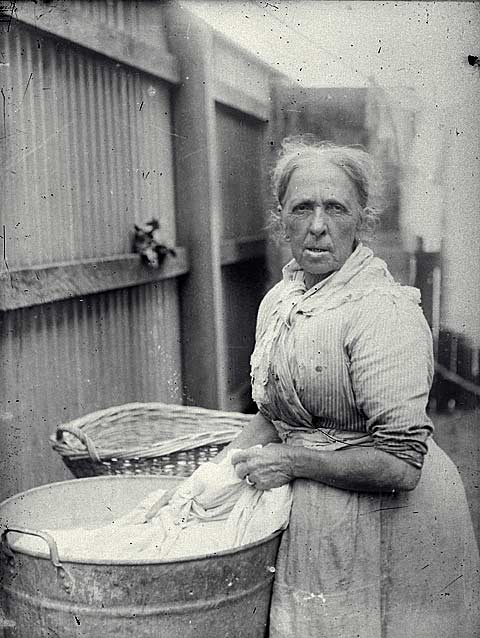 Washing clothes in an iron tub, c1890s
Washing clothes in an iron tub, c1890s
TLF ID R3222
This is a black-and-white photograph made from a glass negative. It shows a woman washing clothes by hand in a galvanised iron tub outdoors, beside a high fence made from sheets of galvanised iron. A cane laundry basket and washed clothes hanging on a clothes line can be seen.
